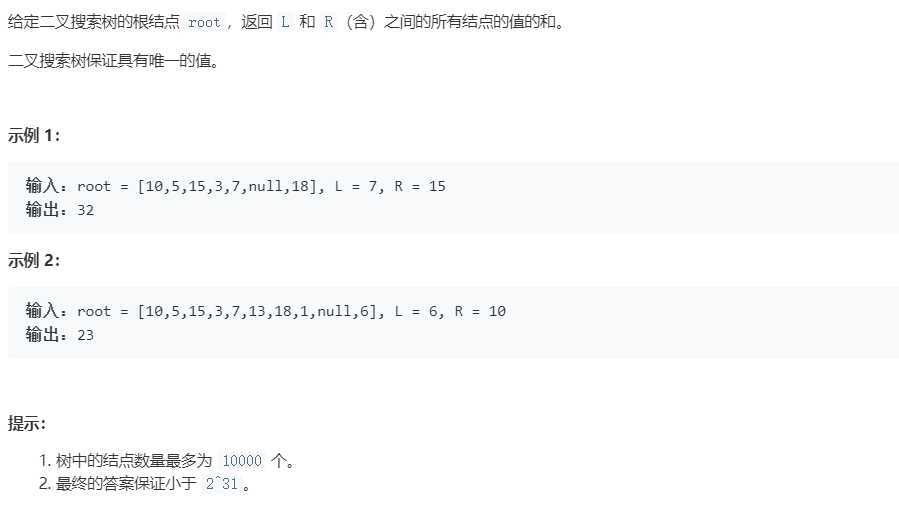题目:

解答:
方法一:深度优先搜索
我们对树进行深度优先搜索,对于当前节点 node,如果 node.val 小于等于 L,那么只需要继续搜索它的右子树;如果 node.val 大于等于 R,那么只需要继续搜索它的左子树;如果 node.val在区间 (L, R) 中,则需要搜索它的所有子树。
我们在代码中用递归和迭代的方法分别实现了深度优先搜索。
1 /** 2 * Definition for a binary tree node. 3 * struct TreeNode { 4 * int val; 5 * TreeNode *left; 6 * TreeNode *right; 7 * TreeNode(int x) : val(x), left(NULL), right(NULL) {} 8 * }; 9 */ 10 class Solution { 11 public: 12 int ans; 13 int rangeSumBST(TreeNode* root, int L, int R) 14 { 15 ans = 0; 16 dfs(root, L, R); 17 18 return ans; 19 } 20 21 void dfs(TreeNode *root, int L, int R) 22 { 23 if (NULL != root) 24 { 25 if (L <= root->val && root->val <= R) 26 { 27 ans += root->val; 28 } 29 if (L < root->val) 30 { 31 dfs(root->left, L, R); 32 } 33 if (root->val < R) 34 { 35 dfs(root->right, L, R); 36 } 37 } 38 } 39 };
原文:https://www.cnblogs.com/ocpc/p/12822145.html